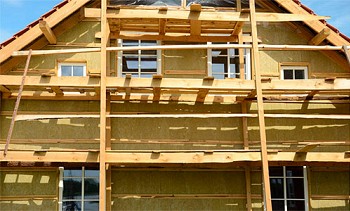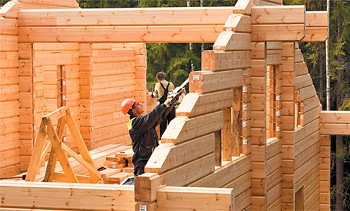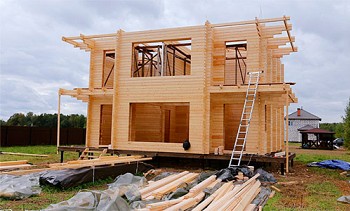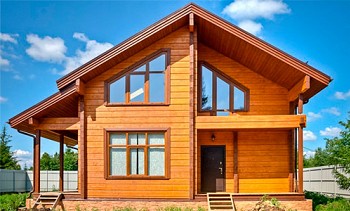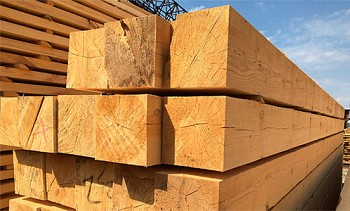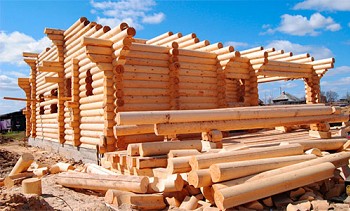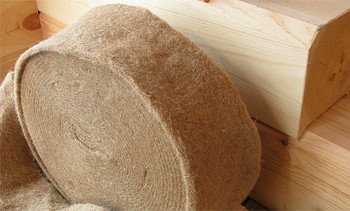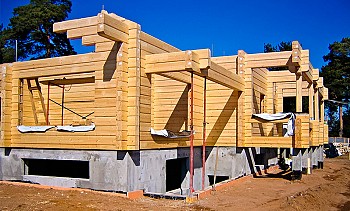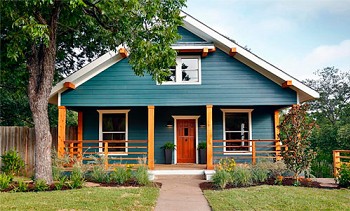How to finish the ceiling in a wooden house - a review of materials
Ceiling - a surface that is always in sight, and its design significantly affects the perception of the interior. It is an important part of the design of the room. When deciding on how to sheathe a ceiling in a wooden house, it is necessary to take into account the peculiarities of its construction and the behavior of wood as a building material.
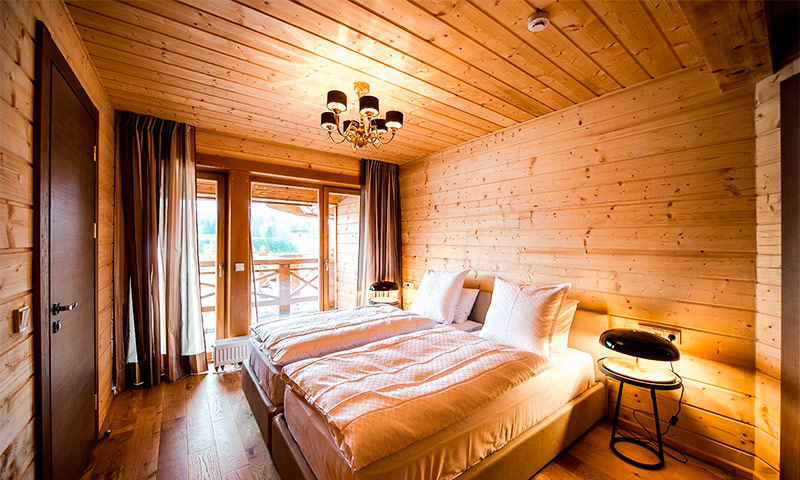
Content:
Features of wooden houses that must be considered when decorating ceilings
Wood is a rather moody material. Wood never becomes completely static. It is affected by changes in humidity, which cause fluctuations in the dimensions of the parts. Particularly strong changes in size in the new structure, until the moisture content of the wood from which it is built, has not come to an equilibrium value.
A new wooden house always shrinks, and this process takes from several months to a year or even two, depending on the quality of the wood and the nature of the structure. The largest shrinkage is caused by a log from a “wild” log. Profiled and glued timber “sits down” much less. There is almost no shrinkage in frame houses, but in this case it is not zero.
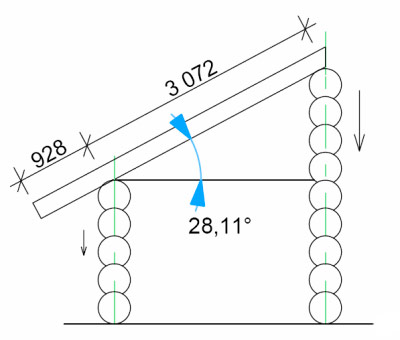
Rafters and walls when installing a log house.
More details: https://call.electricianexp.com/en/10/otdelochnye-materialy/444-chem-obshit-steny-v-derevyannom-dome-vnutri.html
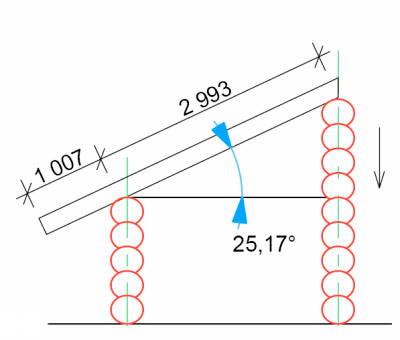
Rafters and walls in a year.
More details: https://call.electricianexp.com/en/10/otdelochnye-materialy/444-chem-obshit-steny-v-derevyannom-dome-vnutri.html
Typically, finishing work is not performed until the end of the shrinkage, but if necessary, finishing can be done immediately, using special installation techniques, which make it possible to painlessly displace structural parts during shrinkage of the house.
After shrinkage, wooden structures also retain some mobility due to size fluctuations, which usually occur when the seasons change.
To finish the ceiling of a wooden house, different materials are used. The preference is most often given to wood, since it is most consistent with the very idea of a house built of wood.
Lining of various types
Wooden lining - this is perhaps the most popular and successful material for a wooden house. Its advantages:
- simple installation and easy maintenance of the quality of the skin;
- wide possibilities of decoration - from stains and varnishes to artificial aging or painting in any color;
- providing some mobility in the absence of gaps.
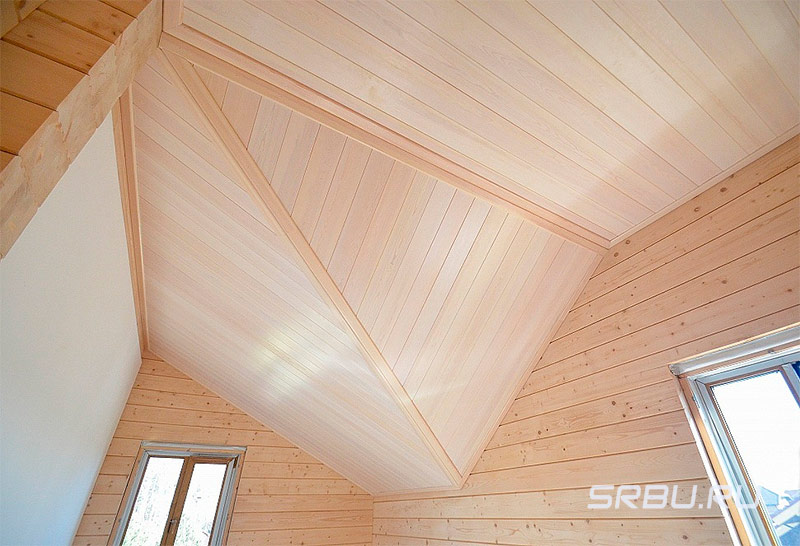
The lining is sewn onto the crate, the step of which is determined by the thickness of the lamellas. Usually it is 500-1000 mm. The edges of individual planks have curly profiles forming spike-groove joints. The surface of the lamellas does not mask the joints, but even emphasizes them, turning into a kind of embossed decoration. This allows you to leave between the strips technical gaps that never turn into slots.
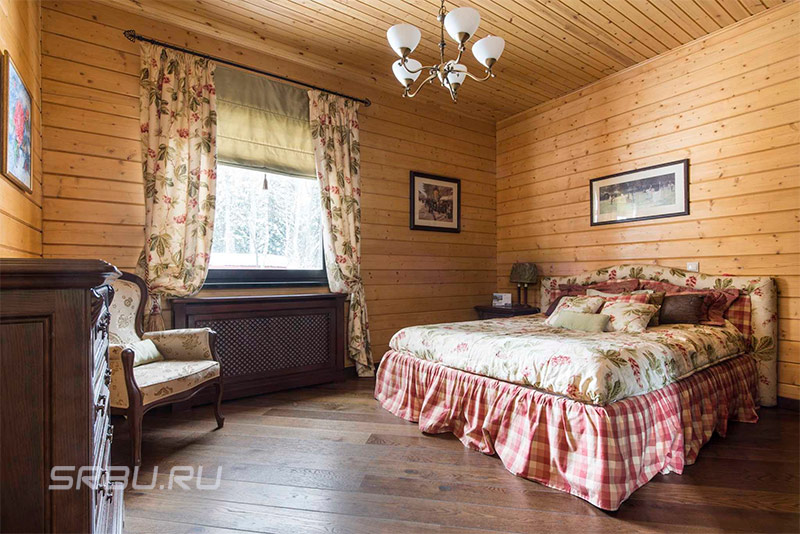
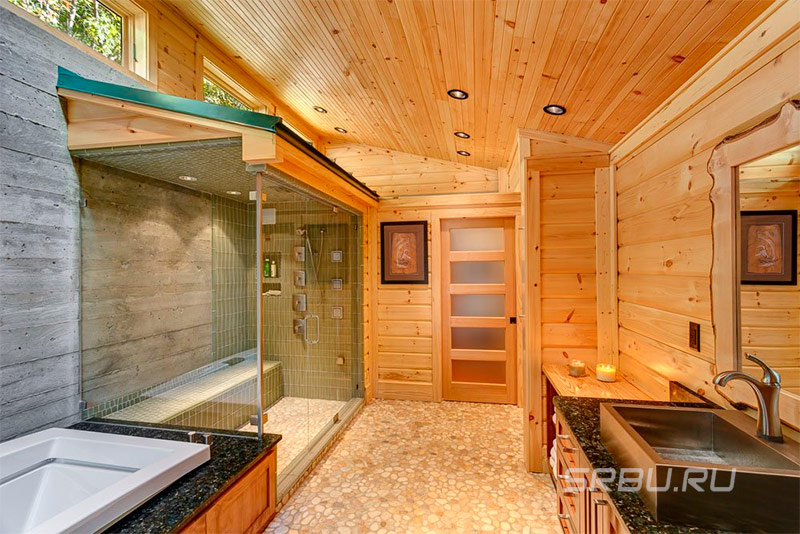
Unedged board
Unedged is called a board with a natural edge, not aligned trim. The unedged edge is never straightforward and usually has an oblique profile. It makes no sense to lay such boards end-to-end without additional processing, since very large and uneven gaps remain between them.
But you can sew unedged boards with an overlap or in two layers. In the first case, a relief surface resembling scales is formed due to uneven edges overlapping neighboring boards. In the second, approximately the same effect is created, but without a pronounced direction, except for the direction along the boards.
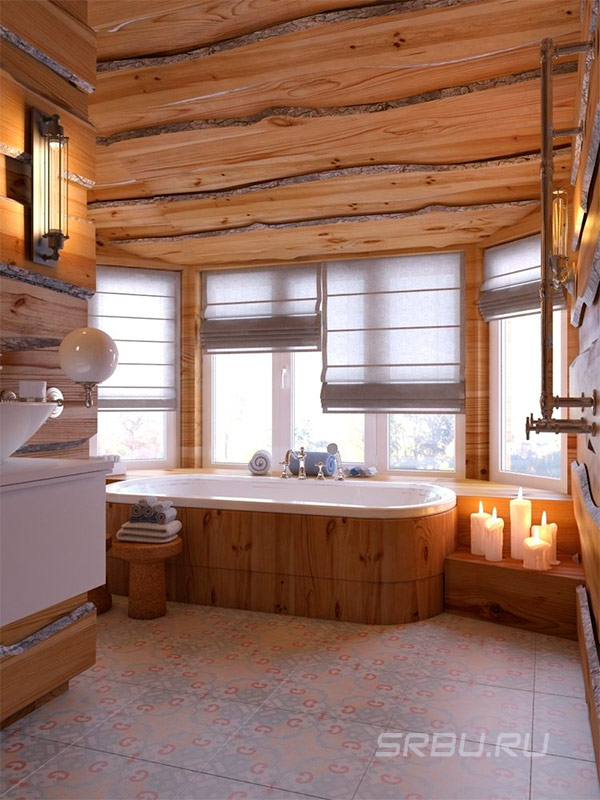
Unedged board has always been considered a rough material, suitable only for use for technical purposes, but not for finishing.However, the prevailing idea of aesthetics is clearly drifting toward natural materials and natural lines. This gave new life to the finish with a demonstrably low degree of processing, including boards that did not go through the edges.
Before use, unedged boards must be exempted from bark and cambium; side cracks and flakes are eliminated on them. According to modern standards, they are treated with antiseptics and fire-retardant treatment. Ceiling decor is a matter of design. As a rule, wood is tinted or undergoes other processing, for example, artificial aging with abrasive brushes.
Toning allows not only to give the skin the desired color, but also to show a woody structure, and varnishing fixes the selected decor, prevents its aging. The use of unedged boards is an original answer to the question of how to cheaply and beautifully sheathe the ceiling inside in a wooden house.
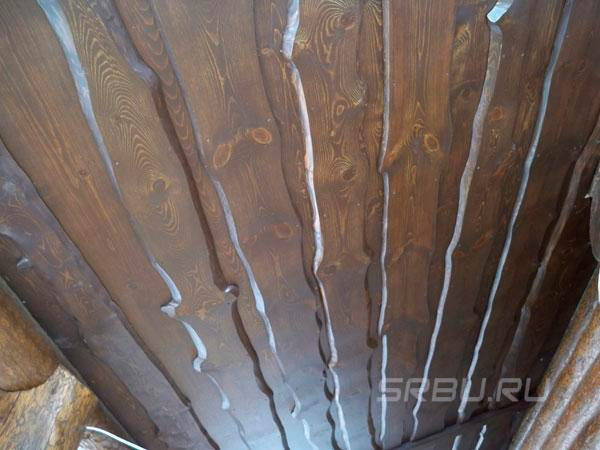
Planken
Planken is a wood material designed for cladding facades and frame structures. Planken in German means "boards". So, there is nothing fundamentally new in this material.
The main differences between planken and ordinary boards are good drying, high-quality surface treatment and a special shape of the edges with corners rounded with a radius of 3-5 mm, due to which there are no edge chips and flakes.
The longitudinal ends of the planken can be straight or oblique. Slanting edges with a slope of 30–450moisture is well removed when covering the facade with a horizontal arrangement of planks. When facing the ceiling, oblique edges can also be useful, since they mask the through cracks.
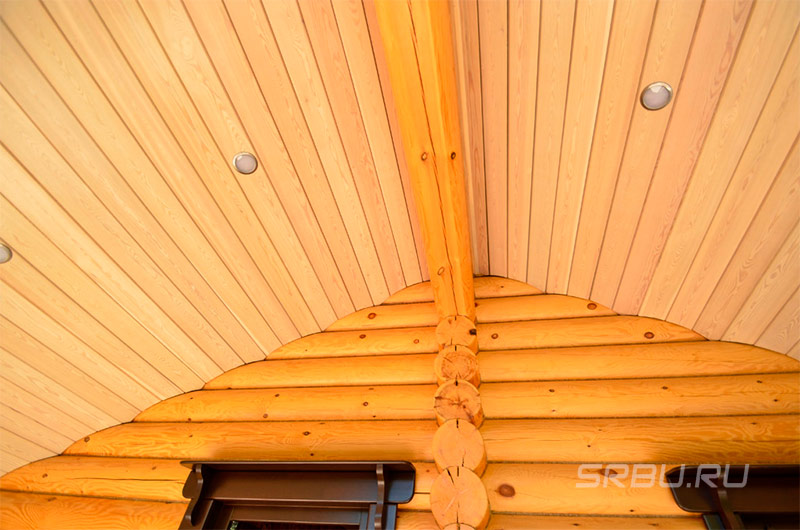
Planken is sewn onto the crate, like ordinary boards or lining. There is always a small gap between the slats to compensate for seasonal changes in size. No locks hiding gaps are provided here. The fastening of the slats can be hidden, like a lining, or through. In the latter case, the fastener heads can be masked or vice versa, used as an additional decor and highlighted with color.
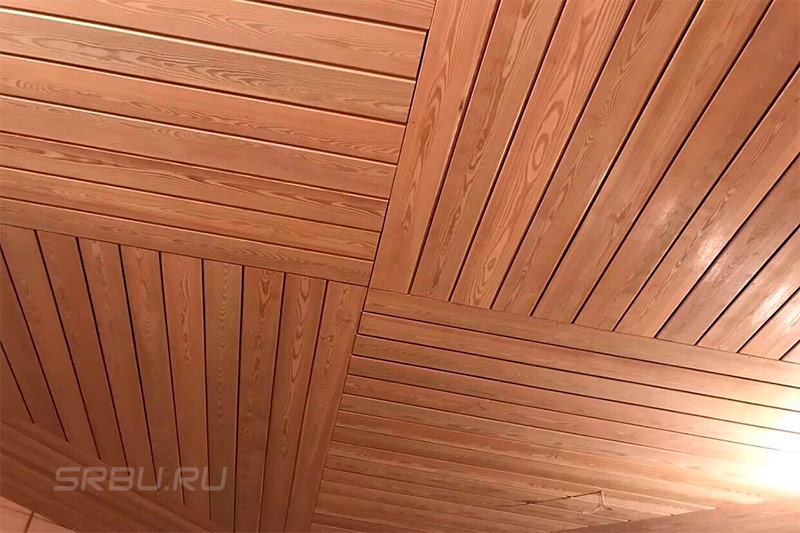
Plywood
Plywood is a sheet material that gives a significant advantage compared to linear long meters - boards or lining. Casing with plywood allows you to get rid of the ruled relief and joints, to make the ceiling level. Nevertheless, it is still not possible to do without joints, since sheets usually are not larger than 2500x1250 mm. However, the number of joints per room is already measured in units, rather than tens and hundreds.
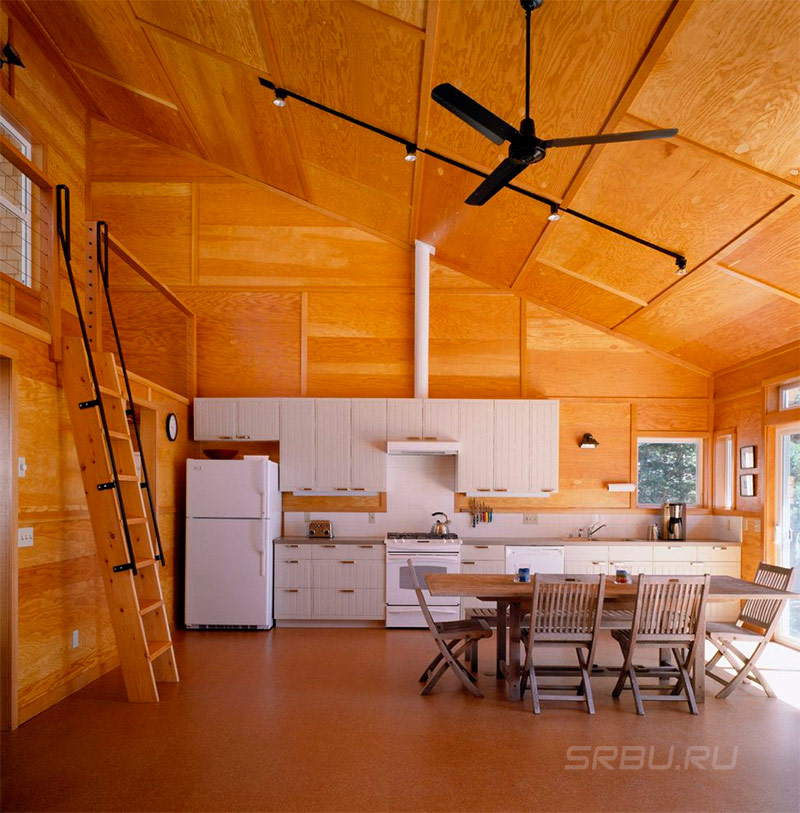
Quality plywood has a flat surface with a wood structure, which in itself serves as a good decor. In addition to ordinary plywood, you can use laminated sheets coated with a decorative layer. In this case, the cladding of the ceiling does not require any processing, even grinding and varnishing.
Low-grade plywood, which has many knots and other defects, can also be used, but in this case you need to take care of the decor. You can, for example, paste wallpaper over plywood sheathing.
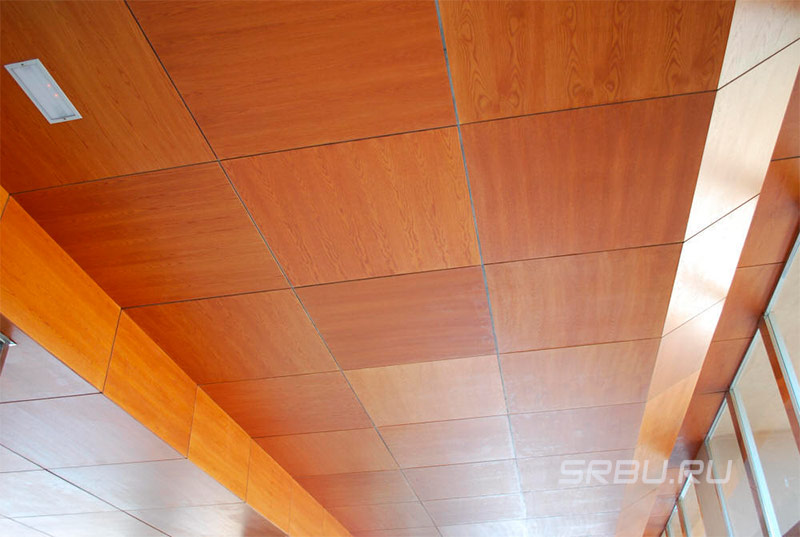
MDF panels
In search of how to finish the ceiling in a wooden house, it is worth paying attention to the facing panels made of MDF. MDF is a good substitute for wood. This material is made from finely ground wood waste that is bonded to the slab with carbamide resins added to the mixture and lignin, which is released from the wood fibers by heating that accompanies the molding of the material.
MDF successfully competes with natural wood due to its advantages:
- ease of use;
- dimensional stability;
- resistance to decay and insects;
- very broad design possibilities.
Cladding panels can be made from it of various sizes - from narrow strips, like lining, to large panels, the size of which is limited only by the convenience of their installation and the possibility of providing slack, which is necessary in order to avoid warping of the skin.
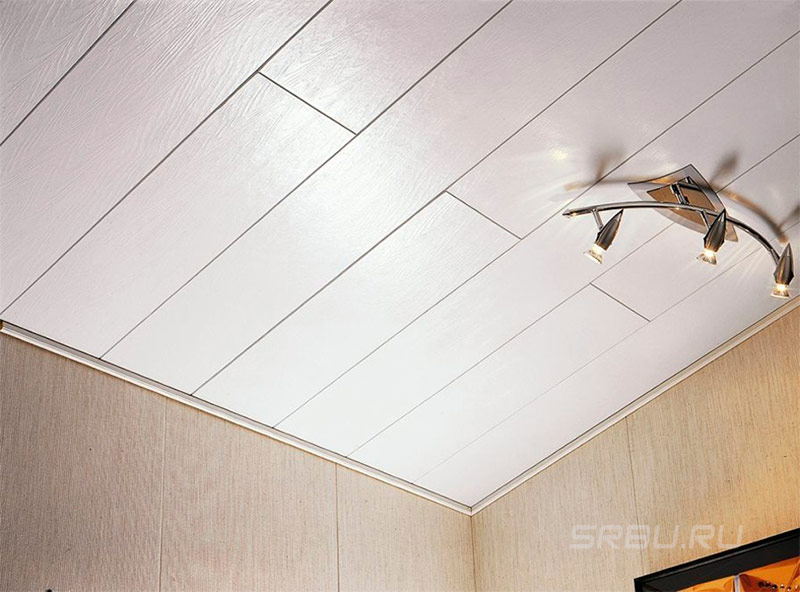
MDF panels are decorated with painting or vinyl film, on which any pattern is applied.Drawing a wood structure is just one of many options. In addition to the pattern, the texture can also be printed on the surface of the plates, which also serves as an ornament. Moreover, any relief can be created on the surface of this material using milling, which further expands the design capabilities.
Here we have significantly moved away from the priority of "wood" design in the interior. The dominance of wood in the interior decoration of a wooden house is very popular, but not required. In addition, wood is very well combined with modern materials, which can also be used to create an interior.
Drywall
Drywall is one of the modern materials that are quite applicable in a wooden house. Its use gives its advantages:
- compatibility with any materials, including wood;
- the simplicity of the formation of smooth surfaces on any, the most "ungrateful" structures;
- wide possibilities of finishing with a complete absence of joints;
- the ability to create any form - from flat planes to light cornices and multi-tiered ceilings.
Drywall is mounted on a crate made of metal profiles or high-quality wooden blocks. A metal frame is preferred. It is not much more expensive than high-quality dry lumber, but more reliable, and special profiles are much more convenient to use.
The drywall finish has no joints, like a lining, plank or MDF panels, so it is mounted so that there are 5-10 mm gaps between it and the walls, which are closed with a baguette.
The joints of the drywall sheets are sealed with a special gypsum composition along the reinforcing tape, the entire surface is also putty with a thin layer, and then painted.
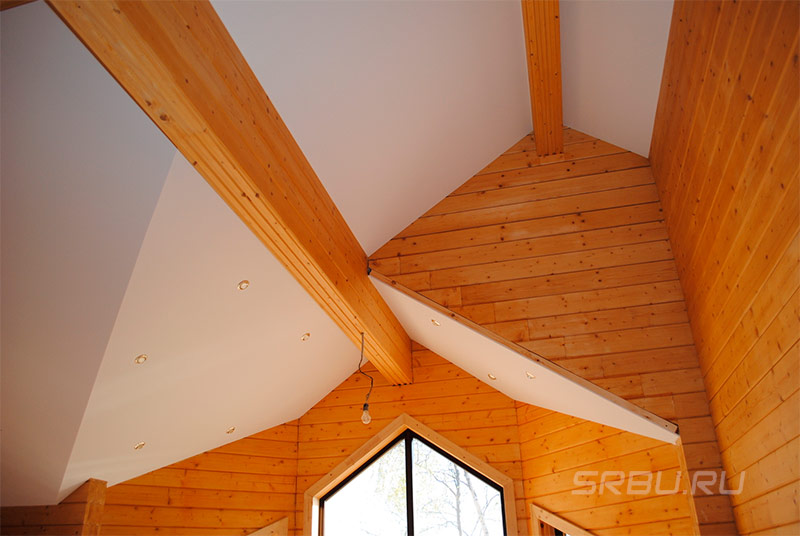
A plasterboard ceiling decorated with wooden false beams looks very impressive in a wooden house.
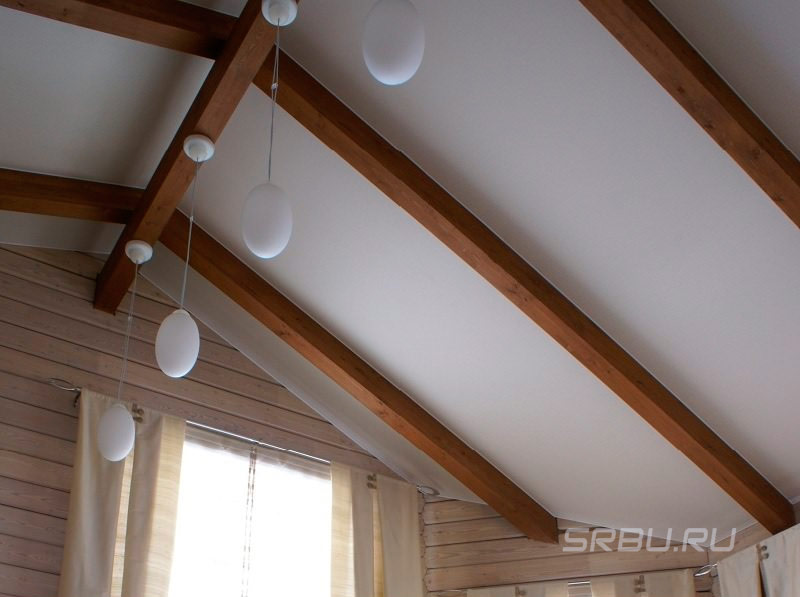
Stretch ceiling
In modern construction, there is a tendency to switch to high-tech materials, the use of which does not require large labor costs, and the quality of the result is ensured “automatically”. These materials include drywall, discussed above. Stretch ceilings are the next step in this direction.
The stretch ceiling is a special cloth and fixing system for it. The principle of creating a stretch ceiling is simple. Along the perimeter of the room, special profiles are fixed on the walls, in which the canvas is then fixed. Then this canvas is stretched, forming an almost perfectly flat plane.
All basic structures - floor beams, rough sheathing, insulation remain behind the finish. They do not need to be aligned, take care of their appearance, you only need to provide for the installation of mounting for a chandelier or other hanging parts. The chandelier and other elements that must be placed on the ceiling are suspended from an intermediate fixture, which transfers the load to the basic ceiling structures.
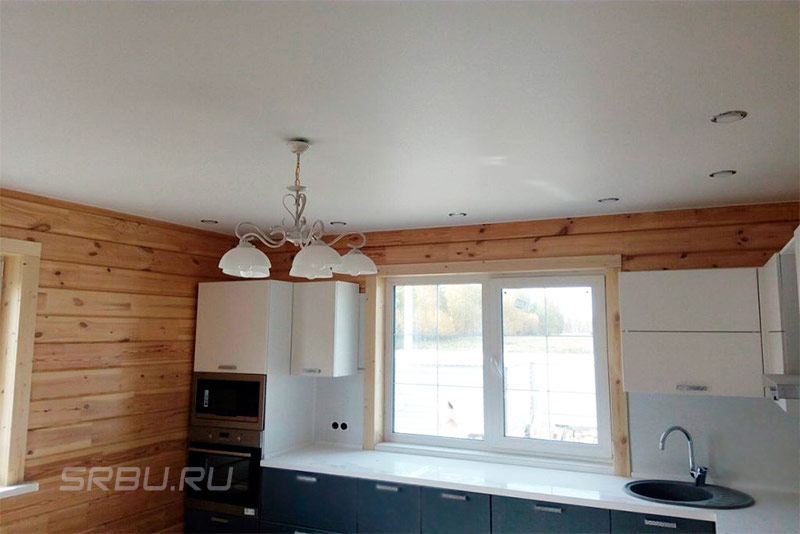
There are two types of stretch ceilings - vinyl (film) and fabric. Vinyl is attached in a relaxed form and then stretched by heating the air in the room using a special installation. Fabric ceilings are stretched due to the special design of the mounting profiles. Vinyl stretch ceilings do not pass air and do not tolerate low temperatures. Fabric ceilings are devoid of all these shortcomings and they are best suited for decorating the ceiling in a wooden house
The possibilities of decorating vinyl stretch ceilings are almost endless. They can be glossy or matte, plain or decorated with drawings of any complexity, up to full-color printing. If desired, you can order any image by providing it in electronic form. And all this does not require complex work.The decor is created on special equipment in the factory, and the on-site installation takes from a couple of hours to a working day, depending on the complexity of the work.
Choosing what is better to sheathe the ceiling in a wooden house, do not limit yourself to only traditional materials. You can weave tradition into modernity, creating a unique interior. A little imagination and a combination of different possibilities can create a house in which you want to stay.

